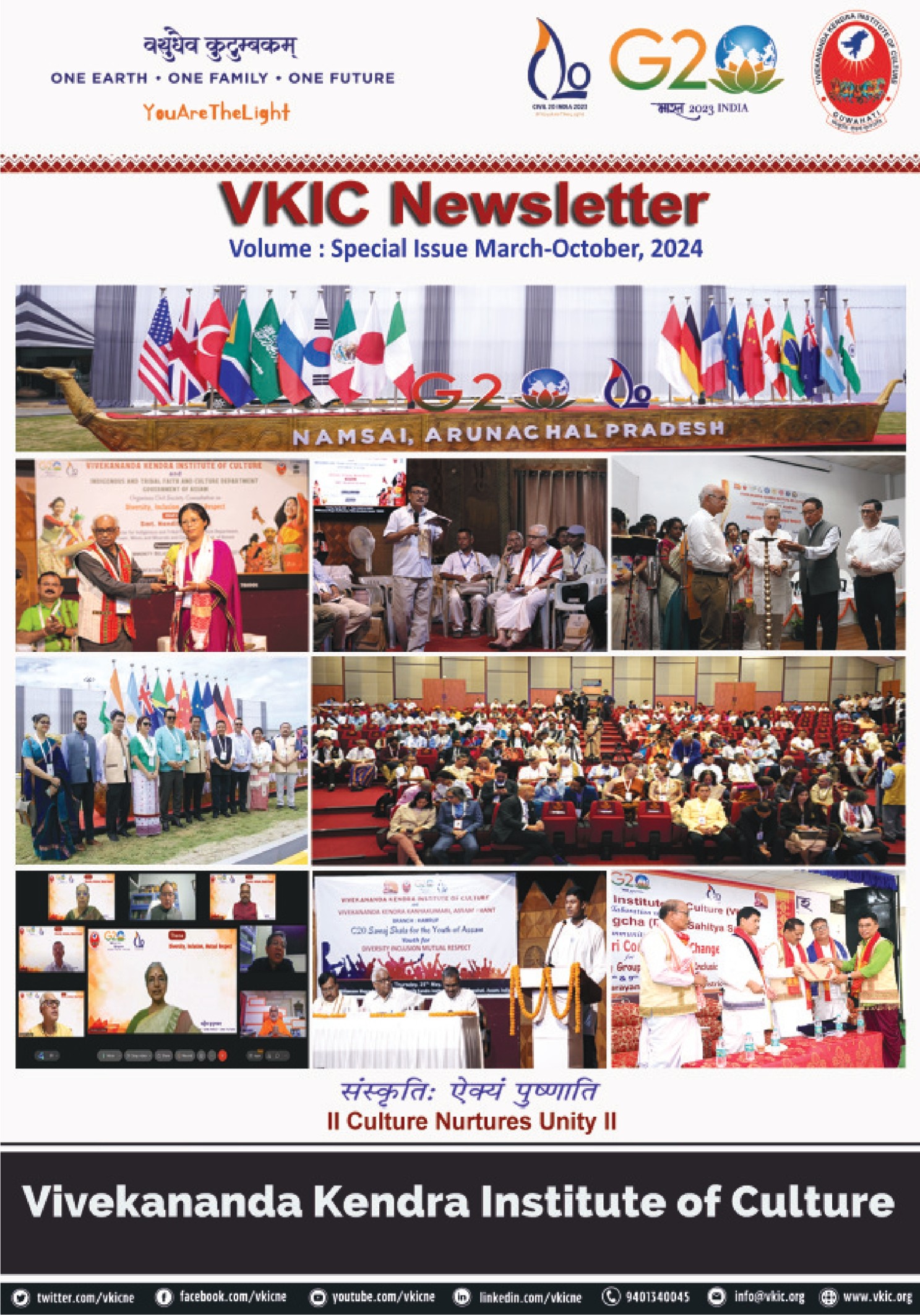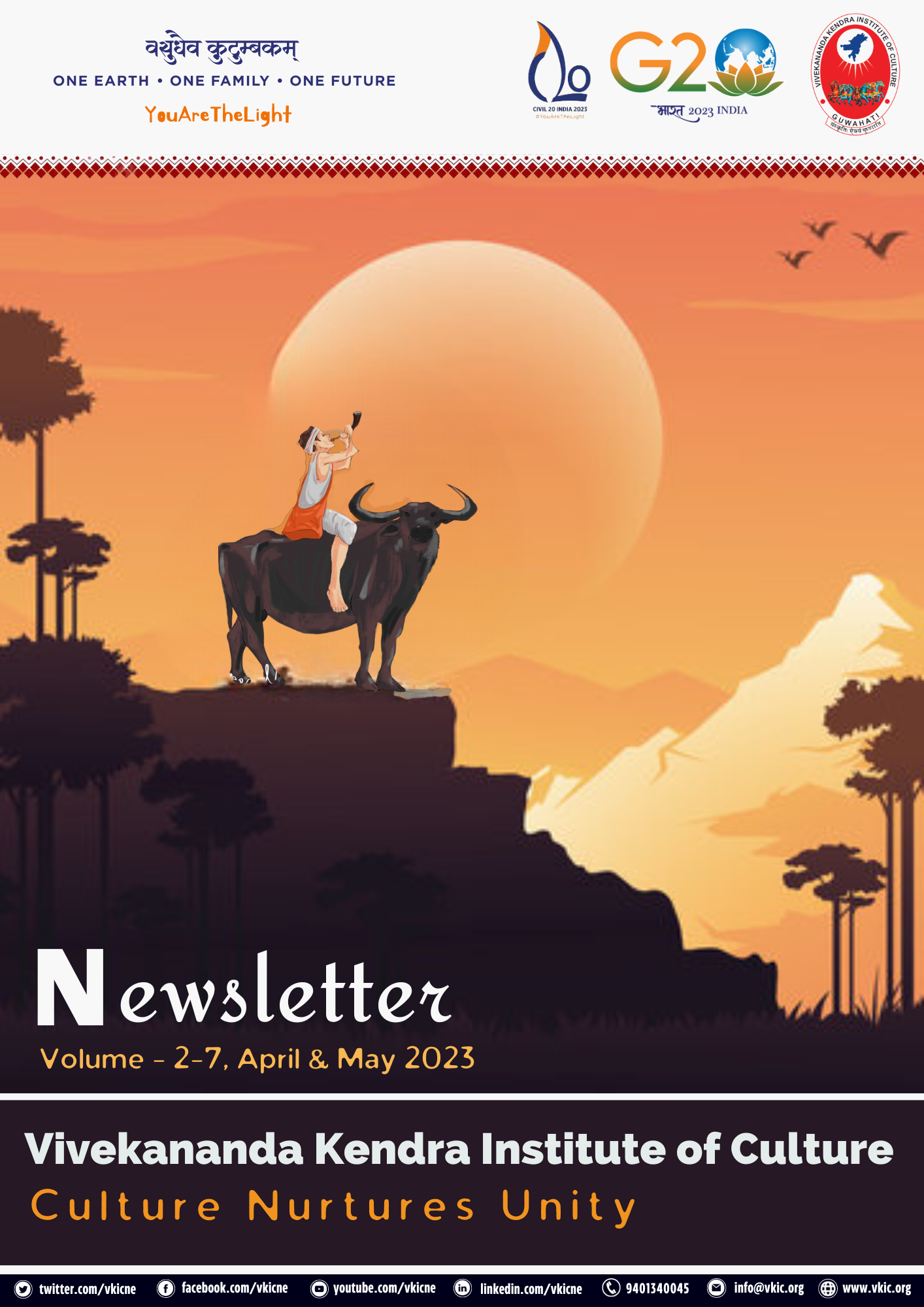Introduction
The Dimasa are one of the major hill communities of Northeast India and are one of the culturally richest communities of Northeast India. Known for their innate peaceful nature and polite demeanour, they mostly live scattered in the glens and valleys of North Cachar Hills of Assam.
The Dimasa have a large treasure-trove of art from weaving and textile to dance and music. Their craft weaving is unique. Through their craftsmanship exhibited with varied bamboo and cane-made articles, they have made an exclusive place of their own in the ethnic scenario of Northeast India. This is their cultural hallmark. From the water carrier to the grain container, they produce almost all the articles, which are needed in their day to day life.
Some of the artifacts used by the Dimasa for weaving are:
This indigenous ginning device for ginning cotton nodules is made of timber. Measuring 25 cms in length and 32 cms in height, it approximately weighs two kilograms. The machine consists of a stout frame having a flat piece of timber at its base and two upright members fixed on it with a difference of 20 cms. Three round bars made of timber are placed horizontally across the middle of the upright members. The central member is longer than the other two. It is provided with a spiral notch on its left and a cross bar in the form of a lever on its right end by which it can be rotated in horizontal position. The left end of the upper bar also contains a spiral notch and it is kept loose over the central one. When the central bar is moved using the end-lever, the upper bar also moves simultaneously. When a piece of seeded cotton nodule is put in between the two bars, the fibrous cotton passes through the gap in between the two bars while the seeds fail to cross and fall down. The fixed lower bar of the machine helps in raising or lowering the central bar to adjust the gap so that the seed-extraction can be easy. It is done using a wooden wedge in between the central and the lower bars. The wooden piece at the base of the Sergi, over which the frame of the machines stands, is fitted at its centre with another piece of wood of almost equal cross-section to the frame members, at right angle to the base member. The person using the Sergi places one of his feet on it to keep the machine in position during its use.

The Sergi is very much in use among the Dimasa living in villages where cotton is produced or easily available. In fact, this instrument was extensively used in the Brahmaputra valley during the Khadi movement till cloth produced by mills overwhelmed the market.
Thuri: The Thuri consists of a piece of solid bamboo with one of its ends closed and tapered like a cone. It is used as a shuttle in a loom and carries a bobbin containing yam inside the open end.
A Thuri measures about 25 cms in length and 2.5 cms in diameter. The outer rim of its open end sometimes contains some simple carvings, which are cut out on its body by scraping the surface. The bobbin is locally known as Khun Thuri. It is made by dressing a bamboo piece in the form of an elongated strip, on one end of which the yarn is wound. This particular end is pushed into the Thuri, keeping the free end of the yarn loose outside it. While using for weaving, the pointed end of the Thuri is shuttled across the arranged yarns in the loom, both ways, in alternate succession to weave the cloth.
The Thuri and Khun Thuri are still widely used by the Dimasa living in the village.
Halai: Halai is a flat piece of wood, which is divided lengthwise into halves. One half of the object is made into a handle and the other half is provided with a few holes, through which ends of yarns can be passed. Halai is used for drawing yarns. The yarns are arranged by spreading them systematically in the form of the proposed cloth and then it is transferred to the loom for weaving. But, while preparing the yarns lengthwise, they need to be drawn from rotating frames, four or more at a time, without twisting one with the other the Halai is used to maintain the position of each yarn. Here the end of each yarn is passed through a hole in the Halai and together they are moved from one end to the other. In Assamese, it is known as Kaarhani.

Maidikho and Balangsi: Maidikho is a piece of hollow bamboo with two knots on either end. A slit is made in horizontal position by removing an elongated portion from its middle part so that a flat-brush can be introduced across the bamboo piece. A solution of water with a material known locally as the Thaimoodo is kept inside the bamboo barrel for a time till it decomposes and attains the quality of a paste. A fibre-brush, known as Balangsi and made of a particular type of hard grass, is used across the slit to bring out the pasty liquid. The spread-out yarns ready for shifting to the loom for weaving are smeared with the paste by using the brush. When the liquid, thus applied, dries up, it makes the yarns rigid, making them fit for speedy weaving.
Balangshi is a kind of bushy grass or broom-grass. Its fibrous flower, when bound together, can be made into a broom for sweeping the floor. The Balangshi used as a brush for brushing the loom is Y shaped.
Khaujeb: It is a kind of small basket and is made of fine bamboo or cane strips. It usually measures 11 cms to 30 cms in height but may slightly vary from place to place. Though small and handy, it is made with so much care and precision that it can be regarded as a piece of art.
Khaujebs have their varied uses. The villagers use them as boxes to keep their valuables including ornaments and money. They are also seen to have been used for storing cotton and yarns, as also other tiny objects needed in weaving.
Though in regular use, Khaujeb does not form a popular craft of the day. The finest of them, documented by our field investigators, are reported to be at least one hundred years old and are kept as heirlooms. The villages where they are found to be still in use are far away from urban areas. In fact, it can be said to be a dying craft of the Dimasa.
A conical cane-made Khaujeb with a lid was found at the remote village of Maibangdisa, which is claimed to be about 150 years old. Another one, found at Laya, is estimated to be 115 years old.
An old Khaujeb from Nobdi Langting, and of 30 cms height, contains a lid on its top and stands on four legs. It is well-built, attractive and the only specimen of its kind found during our documentation anywhere in N C Hills. Both cane and bamboo with an inner layer of Locon (Lairu) leaves are used in making this basket. The leaves make it moisture-proof and ensure its safety from the attack of insects.
Jengthar: This instrument is popularly used in weaving for winding yarns in the bobbin. It consists of a wooden base-frame. The base consists of three pieces of wood framed in the form of a ‘T’. The smaller end of this frame contains two upright posts both of which are provided with semicircular projections with holes to carry a loose spindle. The bigger end of the ‘T’ is also fitted with two wooden posts, taller in height than the ones on the other end, both of which contain holes at the middle to carry a horizontal wheel. The wheel is made of timber and cane with a stout axle across it, an extended end of which is fitted with a lever for rotating the wheel in horizontal position. A small belt is provided in the machine to connect the wheel and the spindle in the lower end, such that when the bigger wheel is moved with the lever, the spindle also gets motion. The extended portion of the spindle can hold the bobbin, which also moves along with the spindle to wind in the yarn. The bobbin is generally made of corn leaves, locally known as Manglai-bugur.
Daophang: Daophang is a special method used for weaving cloths. While it follows the usual steps in preparation of the yarns into the needed length and width, it does not require the usual loom for weaving. Rather, the weaving can be done on the surface of the ground itself. This method seems to be very old and might have been used by the Dimasa when the loom was yet to be introduced to their society.
Rashi: A Rashi is a sieve-like object used in the indigenous looms. It is made of select bamboo and is indispensable for weaving in the traditional way. The instrument consists of two beams of bamboos in parallel position, the gap in between being provided with straw-like bamboo sticks at regular intervals. When the yarns for a proposed cloth are spread to size over ground in a systematic way prior to shifting to the loom, each yarn is passed through the hairy gaps one after another in the Rashi, making them fit for weaving in expected width and fabric by moving the Rashi to and fro.
A Rashi documented at Maibang measured 120 cms in length and 11 cms in width. In fact, all other people who use a traditional loom use this instrument. Incidentally, the instrument is called Rash in the Assamese language.
At the four legged loom, the Dimasa women weave out their unique designs enhancing the beauty of their attires. The colourful clothes with balanced designs bestow on the women added beauty. The indigenous attire of this community occupies a high position in the handloom industry of Northeast India. The blended colours and the conspicuous designs exhibit the bold effort of these weavers, which has enriched the treasury of their material culture. The overall impression that their handloom products give is that of a craft which has achieved perfection both in quality and beauty.
*Anupam Baruah & Pankaj Gogoi were the field investigators and P.C. Sarma, Former Director, Research Advisory Council, VKIC


